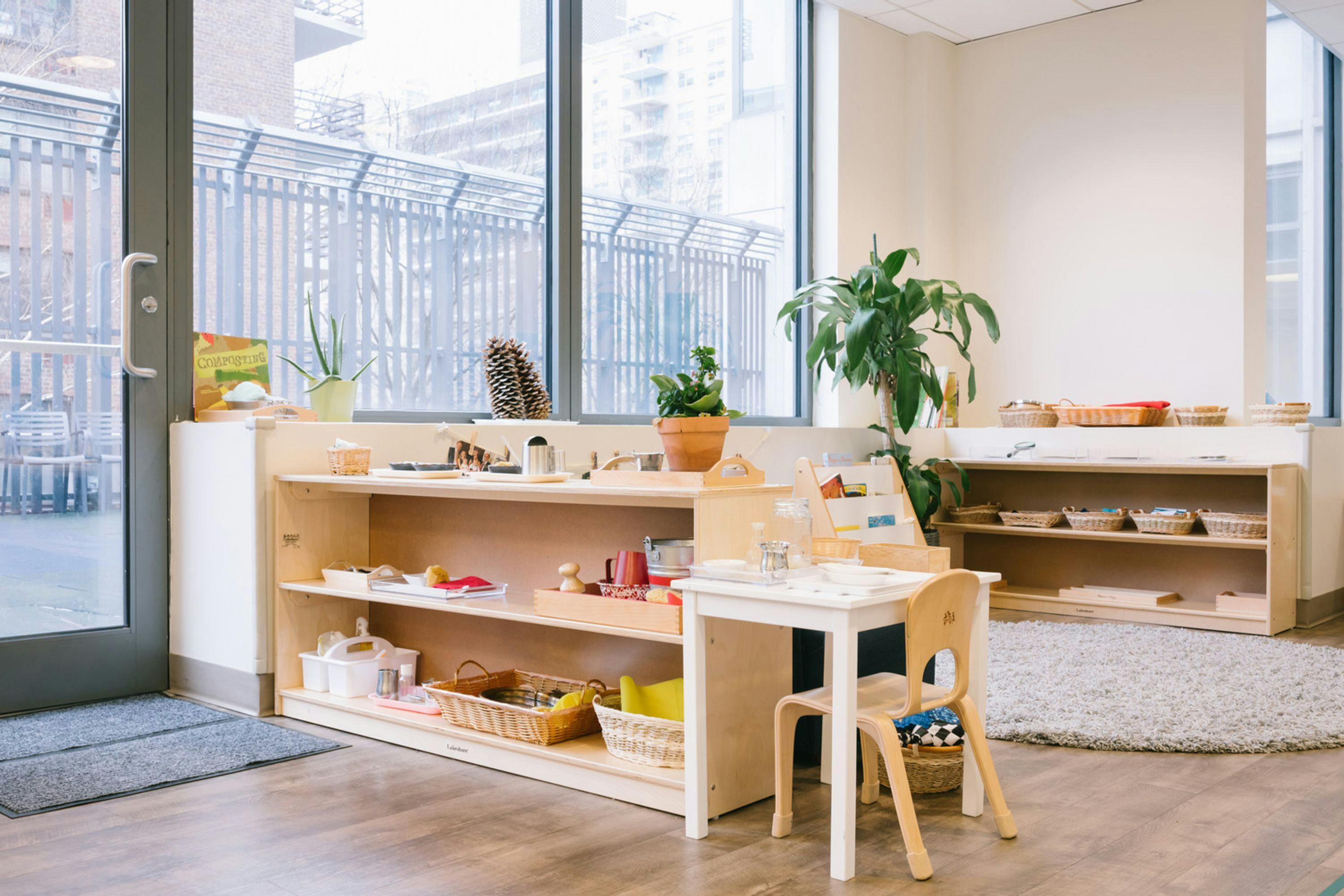The Prepared Environment
The environment, in addition to the student and the classroom guide, is the “third teacher.” Just as every child effortlessly absorbs his native language, so he absorbs the ideas guiding the design of his environment.
Creating a child's world
It’s common to recognize that young children are highly perceptive and unusually sensitive to their surroundings. Montessori agreed, and took this a step further: she believed that children use their early experiences to build the very foundations of their minds.
If the child finds herself in a world of beauty and order, she can use this to form a wordless confidence that the wider world is beautiful and knowable. She is afforded the opportunity to make clear choices from attractive options, to understand where things go and predict where to find them, to focus her attention and efforts on interesting materials, and to succeed at what she sets out to do. She pours her energy into purposeful endeavors that serve her needs and delight her soul — whether a delicious snack prepared with care, or a vase of flowers arranged just so. Through a thousand small actions and impressions every day, she takes this beauty and order into herself. Conversely, if the child finds her world uncared for and in disarray, she will be bombarded with a cacophony of meaningless and disconnected objects, with unpredictability, and with distraction — and might unknowingly fall into patterns of insecurity and dependency to cope with what she takes to be a chaotic world.
These kinds of preverbal beliefs run deep, creating a powerful implicit worldview in the child, a philosophy that guides her as she is starting off and that can linger and echo throughout her life. Modern developmental psychology has catalogued how one’s early experiences can be profoundly impactful, shaping the ways we relate to others (e.g. via our attachment styles) or even understand our own potential (e.g. via our growth or fixed mindset). Many educators have come to recognize the power of the environment and even the classroom aesthetic in shaping the development of their students.
Montessori was an earlier pioneer and progenitor of this perspective on early experiences. As she put it: all children must create themselves, and they do so using the material they find in the world around them.
This is why good Montessori educators take tremendous care of the environments they design for their children. Every tool, every ornament, every piece of furniture is meticulously selected and arranged such that students are able to independently know it and access it. And more than that, it’s designed to instill in students a sense of reverence: that their everyday interactions with the world are purposeful and profound. The materials selected are beautiful, breakable, and precious, begging to be treated with care. Children are taught to take stewardship of their environment; they are taught this through continuous modeling by all of the adults in the school, who are trained to showcase their grace and respect.
The same principles apply to parents who are applying Montessori principles to their home environment: there’s a consciousness of an aesthetic and a simplicity, and an awareness of how to maximize the child’s independence in engaging with her world at home.
The reason for all this attention to the environment is the unique opportunity it affords to:
- Give children striking impressions of organization and order, and thus inspire analogous inner habits of mind. Shelves are ordered functionally, and then from least to most difficult. Each activity on the shelf is organized into trays and baskets.
- Relatedly, instill in children an appreciation for cleanliness and clarity. Montessori classrooms are simplified and uncluttered. They are home to many activities and practices that invite children to participate in actively maintaining this state.
- Create in children the experience of a world of exciting values, a world they can understand, love, access, and use. Children are natural explorers, and in the right kind of environment, that tendency can seed a lifelong curiosity and a real benevolence toward a world that they know is full of excitement and beauty.
Each environment must not only be designed to instantiate principals of beauty and order, not only filled with quality furnishings and materials, not only decorated to be a beautiful home-like (or beautiful at-home) environment for children — it must be maintained with effort. The only thing that can inspire such effort — in the face of the countless competing priorities intrinsic to early childhood education — is the absolute conviction that doing so matters.
Dr. Montessori held just such a conviction: that the environment, in addition to the student and the classroom guide, is the “third teacher.” Just as every child effortlessly absorbs his native language, so he absorbs the ideas guiding the design of his environment.
Our task at Guidepost is to support educators and parents in creating for each child a world worthy of her absorption.
Ideas from the Guidepost Blog
Parenting tips, Montessori explainers and strategies for helping your child become an independent, capable human being — The Guidepost Team is here to help parents succeed
